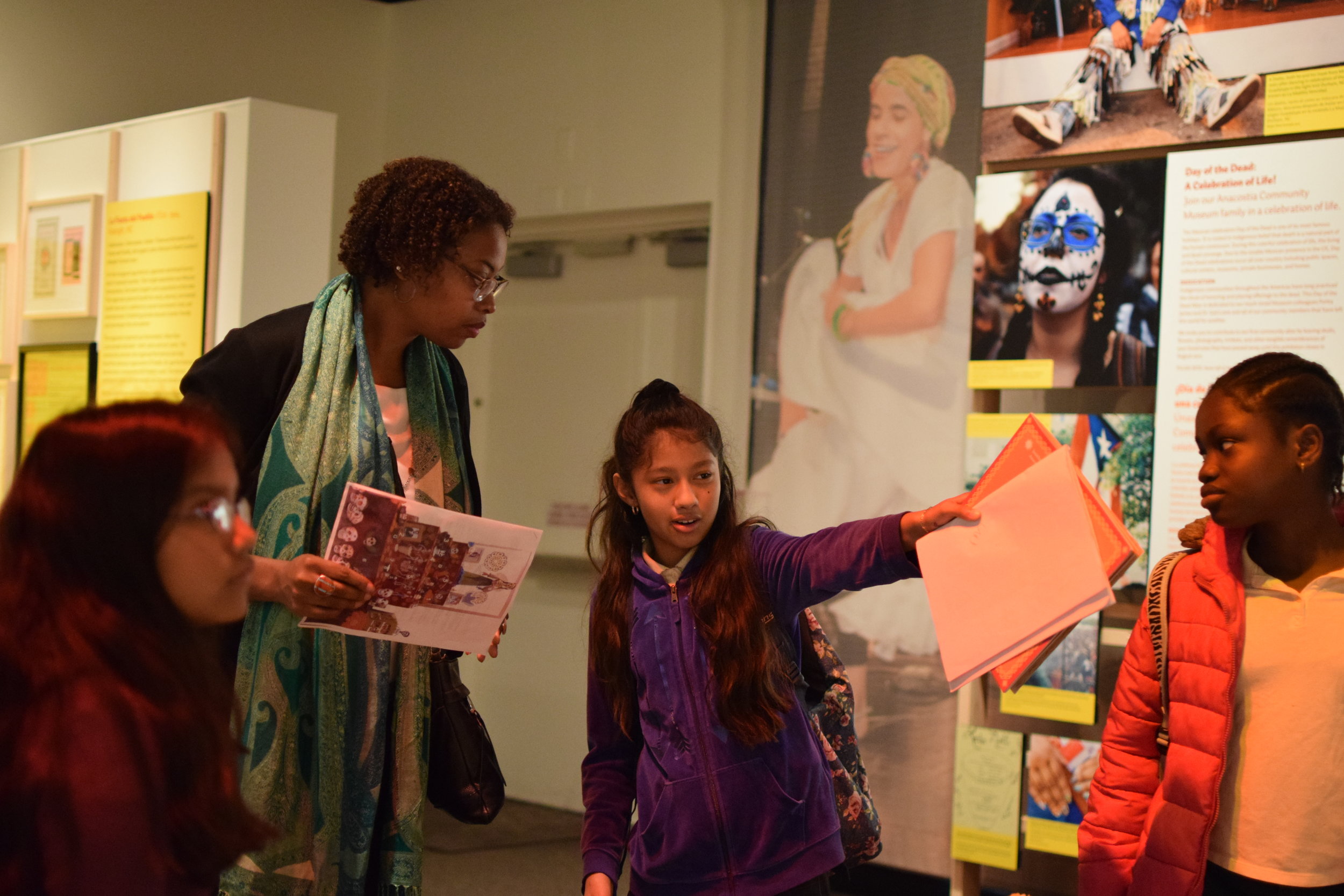Fifth Graders Explore Latinx Immigration at the Anacostia Museum
Fifth graders participate in the Teaching for Change “Intro to Central America” lesson. Photo by Elena Young.
When fifth grade Spanish literacy teacher Cesarina Pierre realized that her nearly two decades of teaching Caribbean students in New York City Public Schools would not fully translate to teaching Central American students in Washington D.C., she sought resources from Teaching for Change. Pierre asked Teaching for Change, a longtime partner at the school, to help her understand the unique experiences of Central American families.
There are a lot of differences between Caribbean Latinos and Central American Latinos, and that’s something I already knew. But becoming aware of politics, and how U.S. policies impacted Central America made me feel like my students need to know that too. The goal is to let them understand so they can be empowered.
Pierre attended a Teaching for Change workshop on teaching Central America at the Anacostia Museum, then brought what she learned back to her fellow fifth grade instructors. Together, they planned a series of lessons with the goal of exposing their students to this important history and helping them see the role that youth can play in making change in their communities. Lesson themes included social justice, civil rights, making home, and community empowerment.
Curator Ariana Curtis with students at the Anacostia Museum. Photo by Elena Young.
To begin their exploration of these themes, students analyzed murals created by Colombian born, D.C. based artist MasPaz and engaged in discussion about the social justice messages embedded in his art.
In the next lesson, students brought to class and examined personal artifacts that represented their home. Students, through guided reflection, discussed the significance of their artifact and why it felt like home. By first reflecting on their own conceptions of home, students were able to better connect to the experiences conveyed in the exhibit of trying to make a new space -- a new country -- feel like home.
The lessons culminated with a field trip to the “Gateways/Portales” exhibit at the Smithsonian’s Anacostia Community Museum. There, students watched Risers, a short film on Latinx millennials in Washington, D.C. They then participated in Teaching for Change’s “Introduction to Central America” lesson, in which each participant takes on the identity of a key figure of note in Central American history and has the opportunity to “meet” the other key figures. Pierre modified the lesson for elementary learners by focusing on four types of people: someone from the student’s country of origin, an activist, a writer, and a government or military member. Students participated in the mixer activity using a guided note taking sheet that included prompts like “Would you be friends with this person? Why?” and “What did he or she seek to do with their power?” Finally, the students toured the exhibit with curator Dr. Ariana Curtis, who answered questions and fielded their stories and comments.
Jordan Meyer, a fifth grade math teacher, remarked,
I’ve spent time in Central America, but learning about the history and how the United States impacted it is really important, contextually. If you don’t openly acknowledge this it can be hard to build trust with students. This is just as important an experience for us [teachers] too, because it helps us think about how we can further include issues of identity and justice in our work, and we can all use the same language around it.
Ms. Pierre hoped that the collective lesson on Central America would expose her students to the cultures and history and ignite a passion in them for cultural pride and social justice.
If we are preparing citizens of this country, no matter where we are from we have to learn about different experiences. Only when people are informed can there be true democracy. I want them to know their rights, fight for themselves, and for people who don’t have their rights.
Learn more about Teaching for Change’s “Introduction to Central America” lesson as well as find other resources to teach Central America.


